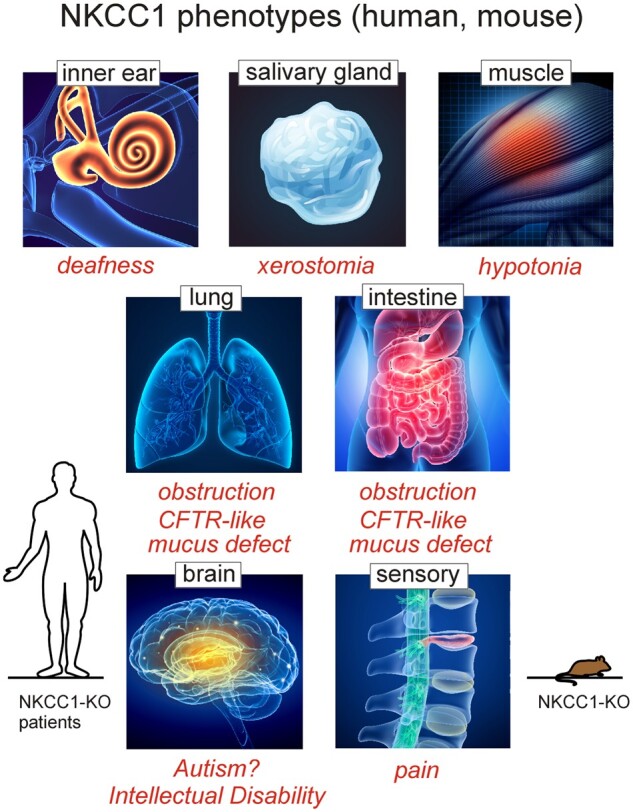Figure 2.

Phenotypes Associated with Loss of NKCC1 Expression in Humans and Mice. Inner ear, salivary gland, lung, and intestine are affected by lack of NKCC1-mediated transepithelial transport of ions (K+ and/or Cl−). Central neurons (brain), sensory neurons, and muscle cells are affected by lack of NKCC1-mediated intracellular Cl− accumulation. Resulting phenotypes are deafness, dry mouth, mucus obstruction in lung and intestine, neurodevelopmental delays, pain perception, and hypotonia. With the exception of autism, intellectual disability, and muscle weakness which have not been established in mouse, all other phenotypes are observed in both species and characteristic of the disorder associated with complete loss of NKCC1 function.
